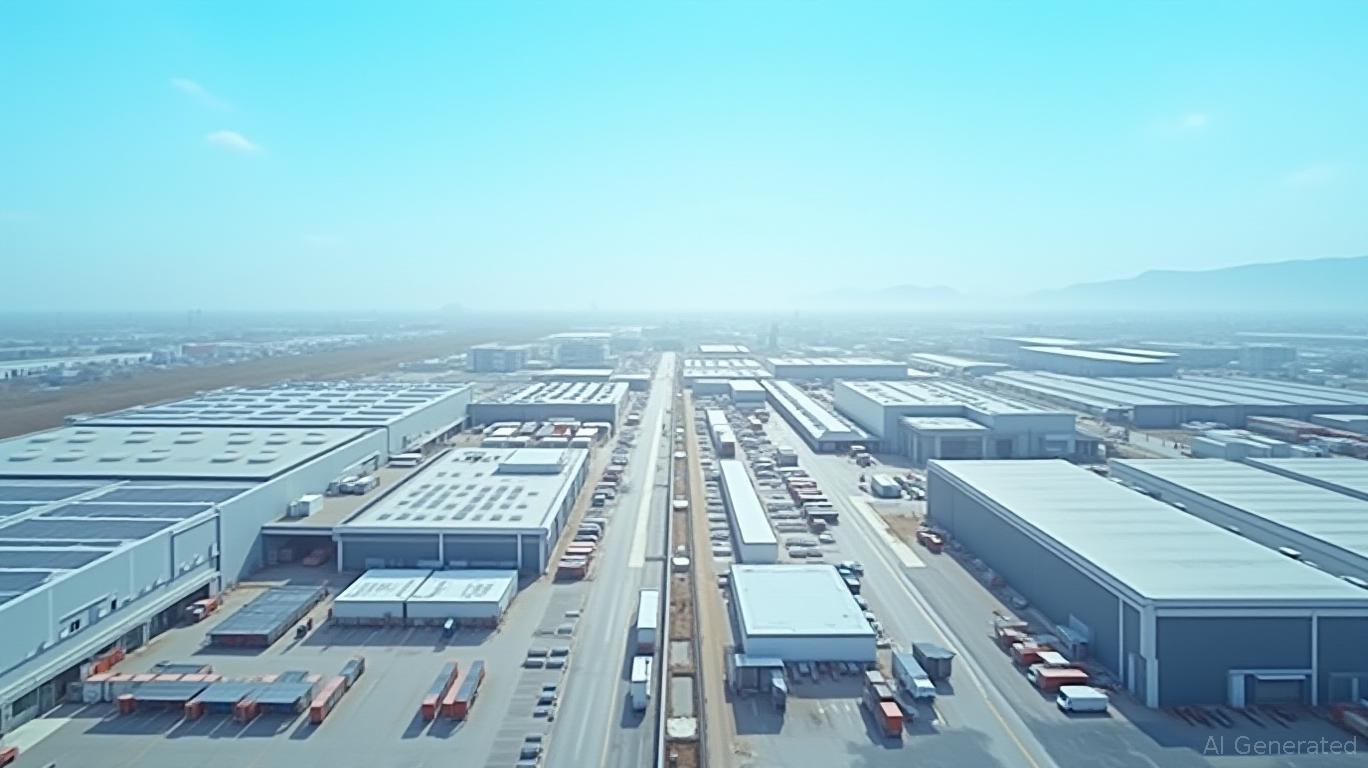ILPT's Fixed-Rate Refinance: A Masterclass in Rate Risk Mitigation for Industrial REITs
Industrial Logistics Properties Trust (ILPT) has pulled off a strategic refinancing move that could set the standard for industrial real estate investment trusts (REITs) navigating today's uncertain interest rate environment. By locking in $1.16 billion of fixed-rate financing at 6.399%, the company has slashed its annual interest expense by $8.5 million while eliminating exposure to rising rates—a move that underscores why ILPT stands out as a model of financial prudence in its sector.

The Cost Optimization Play
The refinancing's immediate impact is clear: by replacing $1.235 billion of floating-rate debt with fixed-rate terms, ILPT has reduced its outstanding debt by $75 million (the difference between the refinanced amount and cash used). The new 6.399% rate is a full 100 basis points lower than the 7.4% blended rate it was paying on its previous floating obligations. This shift translates to annual savings of $0.13 per share—a meaningful buffer in an era of margin compression.
The numbers tell a compelling story. As of March 2025, ILPT's interest expense had already dropped 4.6% year-over-year to $69.8 million, even before this latest refinancing closes. Once finalized on June 26, the savings will compound further. . This financial engineering isn't just about cutting costs—it's about creating operational predictability.
Hedging Against Rate Volatility
ILPT's pivot to 100% fixed-rate debt is a masterstroke in risk management. Floating-rate loans, while cheaper in a falling rate environment, expose companies to the whims of the Federal Reserve. By locking in rates now, ILPT avoids the possibility of paying 8% or higher on its $1.2 billion debt if the Fed pivots to a hawkish stance.
The refinancing also eliminates the need for costly interest rate caps—derivatives used to hedge against rate spikes—which had cost the company $10.2 million in amortization alone in Q1 2025. That's real money saved on an ongoing basis. For comparison, . The message is clear: fixed rates are a safer bet when the Fed's path is uncertain.
Balance Sheet Resilience in Action
ILPT's balance sheet now looks more fortress-like than ever. With $5.36 billion in total assets and a 76% revenue concentration in investment-grade tenants, the company has a strong moat against economic shocks. The refinancing extends debt maturities, pushing the average term out to five years—critical in an environment where short-term debt refinancing could become costly.
The equity position, while showing a net deficit, is now better insulated. The $75 million debt reduction and $8.5 million annual savings buy ILPT time to grow its core business without financial strain. This is particularly valuable in an industrial sector where vacancy rates are tightening and rent growth is accelerating.
Broader Implications for Industrial REITs
ILPT's move isn't just about its own balance sheet—it's a playbook for the sector. The industrial real estate market is undergoing a refinancing wave as REITs rush to lock in rates before Fed hikes intensify. Companies like Prologis (PLD) and AMB Properties (AMB) are following similar strategies, but ILPT's execution stands out for its precision.
Investors should note two key takeaways:
1. Fixed-rate debt is becoming a necessity, not a luxury, for industrial REITs. Those lagging behind risk paying premium rates if they have to refinance in a higher-rate environment.
2. Tenant quality matters. ILPT's reliance on investment-grade tenants (76% of revenue) ensures steady cash flows to service debt—a stark contrast to peers with weaker tenant covenants.
Investment Considerations
ILPT's stock (ILPT) has underperformed the industrial REIT index over the past year due to broader sector volatility, but its refinancing could reposition it as a defensive buy. The $0.13/share annual savings equates to roughly 2% of its current dividend yield (~6.5%), providing a cushion against payout cuts.
However, risks remain. The refinancing's success hinges on closing on June 26—a delay could disrupt the savings timeline. Additionally, ILPT's $4.3 billion in liabilities still loom large, and occupancy at its Hawaii properties (a smaller but riskier segment) could be vulnerable to tourism fluctuations.
Final Take
ILPT's refinancing isn't just a tactical win—it's a strategic realignment that turns rate risk into a competitive advantage. For income investors, the company's combination of fixed-rate stability, tenant quality, and cost discipline makes it a compelling option in an uncertain interest rate environment. The lesson here is clear: in an era of rate volatility, the best offense is a well-hedged defense.
Investors seeking stability in industrial real estate should look past near-term sector dips and focus on companies like ILPT that are proactively securing their financial futures.

Comments
No comments yet